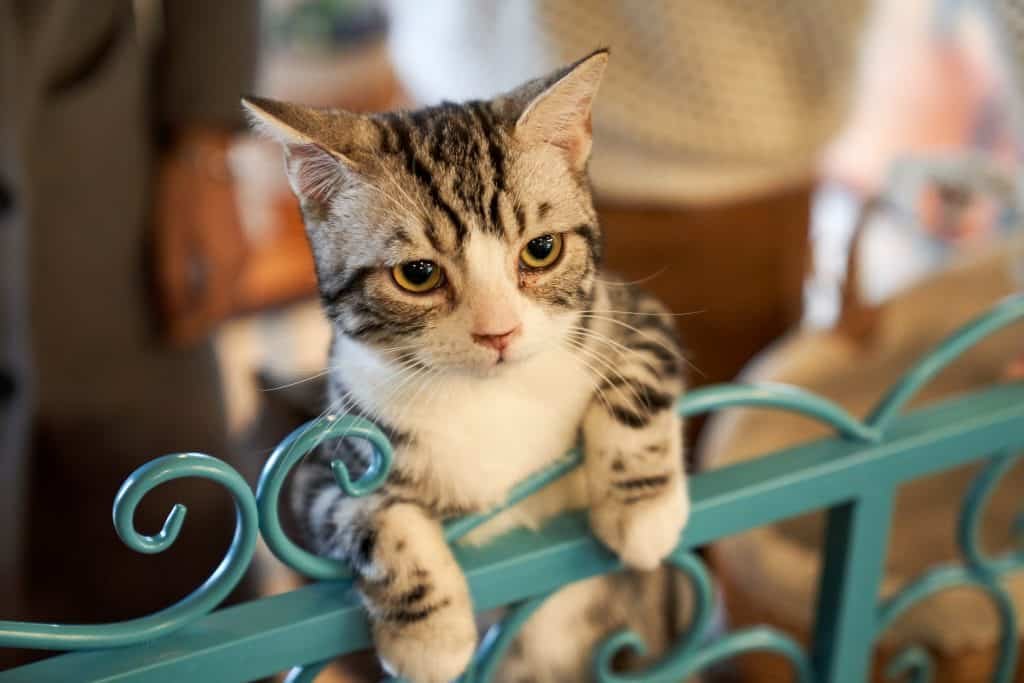Every parent will agree that a child’s safety and protection are the priority number one in their life. However, even if you feel your home is the best place to protect your baby from danger. It all can change when your newborn starts exploring the world around you. At this point, getting a child safety gates or fences can make your home a safe environment for your little one to grow.
Safety considerations
An adequately secured child fence or safety gate is one of the top choices while babyproofing. It can give you peace of mind allowing you not to stand by your baby 24/7. It can also help strengthen a kid’s muscles if they are in a phase of pulling themself up to a standing position. The vital thing to know is that child safety gates are usually suitable for children between 6 months and two years. Once your child learns how to escape it (open it or climb over it) – it should no longer be used as a safety device. The other safety recommendation is to get the correct type of safety gates for each location in your home. You also need to consider a secure gate lock system by installing them. So that your kid could not open it, height/length proportions, and the material. You should make sure a gate is at least three-fourths of your child’s height and avoid any additional entrapment hazards. Growing kids are curious and so they can quickly put their fingers into the fence. Or try to stick their heads between gate bars. They can also lick, chew or scratch the isolation. So you need to make sure your gates or fence can survive it and, most important, don’t harm your baby.
Primary considerations when choosing a baby gate
When selecting a baby gate for your home, you need to consider these main factors to make the best decision.
Where is the gate for?
It is crucial to find the ideal place for your baby’s safety gates in your home. You need to be aware that not all of them are suitable for different areas. So, there are two main types of gates to serve your needs – pressure-mounted and hardware-mounted gates. Generally speaking, pressure-mounted gates work best for doorways, hallways, and temporary safety gates. It’s also the right choice for anybody who doesn’t want to damage their walls by screwing them. Hardware-mounted gates can be used in dangerous places. For example, you need extra protection at the top of the stairs. It’s an ideal option to make sure they stick to the initial position. Here I give you a couple of examples that you need to know about installing gates in different home locations.
- Standard Spaces. While babyproofing your living room, bedroom, or other living areas, you need to make sure any sharp and fragile items are kept out of reach for your kid. You can choose portable and easy-to-fold baby fences and pressure-mounted gates for situations like this.
- Wide Spaces. If you need to block off a section of a room or between rooms or have an extra-wide hallway, you will have to take care of an extra-wide baby gate. Measure the space before you purchase a barrier because most of them are designed to extend to around 4 feet in width (1,2 meters). Other than that, some hardware-mounted baby gates can be accompanied by individual extenders to add to their width.
- Staircase Spaces. One of the babies’ initial instincts is to climb. And they are especially attracted to the stairways. You need to block access by putting gates at the top and bottom of a staircase. If you can’t have them both, install them by prioritizing the area where they spend most of their time. You also want to make sure it’s as secure as possible. So the best solution here can be hardware-mounted gates with a walkthrough gate option.
- Narrow Space. Suppose you have a tight entrance to the room or a small hallway where you want to install baby safety gates. You need to look for expandable ones. Scalable design is coupled with pressure-mounted safety gates, so this can be your best option.
- No Walls. Modern houses are usually now built with a lot of space. You might wonder how to limit your baby’s access to certain areas if there are no walls to install the gates. You can choose an open-ended accordion fold gate for large openings, which is expandable and portable. You can form the exact barrier and ensure your baby is safe within these gates’ limits.
- Sliding Doors. It’s not so easy to protect sliding doors, especially if those are the entry to the outside world. Yet one of the solutions can be getting a gate with multiple panels. It can be fixed on both sides of the door frame and create a bay window-shaped barrier. Besides, you can find many different child safety locks installed on the doors. But in this case, you won’t be able to keep the balcony or terrace doors wide open.
Do you have a pet?
If you are a pet owner, you need to consider your pet’s movement options before installing baby safety gates in your home. What is best for your baby can’t be a real struggle for the cat or dog you keep inside and vice versa.
- Climbers & Jumping Dogs. If you have a dog that can jump or climb, you need a baby gate with extra height. Another detail is to make sure your gates are physically strong to hold the pressure when your dog tries to get it through. Finally, your dog needs some training to understand he can’t go further if you don’t let him.
- Let Your Cat Through. One of the best options for cats is a pet door. In most cases, they are more flexible than dogs and can find their way to bypass the obstacle. But if they can’t squeeze through the gate bars, push the swing gates doors or are just unwilling to jump over, go ahead and consider a pet door. Note that pet doors are only available in swing gates.

Portability
Sooner or later, sitting at home with your baby born can get overwhelming. And you might want to change the place for a couple of days. Many parents travel with their kids from a very early age. However, traveling with babies can be stressful for both parents and infants. So if you want to skip the worrying part, think about light portable travel gates. They are usually made out of mesh or soft fabric and are easy to carry around. They also do not have a door, so you will have to step over it, which is common to all portable gates. Check pressure-mounted gates or barriers – they can help you here.
Do you need a gate for outdoor use?
Not all gates are suitable for outside. You need to pay attention to its material so that it can’t rot or rust. Secondly, you can check for special play yards, barriers, and deck netting that are great for ensuring your baby’s safety while playing outside.
Easy to use?
Baby safety gates are supposed to keep your baby safe but don’t have to be a challenging task for you to go through.
- Hands-Free Baby Gate. This kind of gate is designed to let you open a gate either with one hand or no hands. The best option is to choose a gate with a foot pedal, as you need to press on the pedal and walkthrough. Then there are dual swings and self-closing gates to let you pass through easily and make sure they are closing after you.
- How Does it Look? After choosing the safest and the most suitable baby gates type for your home, you can start thinking about the look. Baby gates or fences come in a wide range of colors and materials, depending on your needs and taste. The manufacturers do not only offer traditional metal or wood but also mesh or plastic.
Types of baby safety gates
Let’s dive into the world of the baby gates and find out the pros and cons of each of them. Here are the main baby gates types.
Swing gates
Swing gates are also known as side opening gates and are one of the most popular baby safety gates. They can be set up to open one or both ways.
PROS:
- Swing gates are available with hardware mounts or pressure fit
- It comes in different materials (metal, plastic, or wood)
- Provides one-hand operation – easy walkthrough
CONS:
- Installed in narrow spaces can block the entrance
- Usually comes with a tight doorway space
- If it swings both ways – it can be locked up
Retractable gates
Also known as expandable gates and work similarly to a roller blind. Best works for those who don’t want to close a specific area permanently.
PROS:
- Retractable safety gates can use in different spaces in your home – doorway, stairway, or hallway
- Can fit non-standard openings as you can control the length
- Easy installation
- It coils up and fits nicely against the wall
CONS:
- Not easy to walkthrough
- Has some safety limitations – lack of strength
Pressure-fit stair gates
Safety gates are held in place by pressure pads at every four corners and are usually installed in a doorway. They can be made from wood or metal and are pretty easy to install as you don’t need to drill your walls.
PROS:
- Easy to install – no drilling or screwing
- Portable – easy to change the location
- It can include extra features such as alarms to signal that they haven’t been shut.
- Suitable for staircase protection
- Optional swinging setting and other extensions
CONS:
- Potential trip hazard
- Not recommended to use it at the top of the stairs
- Not very stylish

Screw-fit stair gates
These are also called hardware-mounted safety gates and are fixed to the wall with metal screws. Usually, they tend to be chosen for their capability to withstand physical pressure.
PROS:
- Durability: robust
- No trip hazard
- Extra protection for more substantial or bigger dogs
CONS:
- Leaves holes behind once they’re removed
- Not portable
Mesh safety roller safety gates
The key feature of these gates is the soft fabric or mesh they are made of. Roller safety gates are built in the same pattern as retractable gates; they can be easily retracted when not in use.
PROS:
- Can be suitable for wide openings
- Good looking design
- They can tuck away to become barely noticeable
- Because of the material softness, it is almost impossible for your kid to get injured when bumped
CONS:
- They need to be screwed into the wall
- More expensive than standard safety gates options
- It can often get dirty as it features a mesh/fabric panel
- Easier to wear out
Wooden stair gates
If you have a house with a wood interior at your home, you might consider getting wooden stair gates to match the decor. They can be either screw-fit or pressure-fit.
PROS:
- Aesthetic look.
- Wood is cheaper than fabric when used for expandable or retractable baby safety gates.
- It might be safer than metal if you are afraid of bruises when the baby knocks ahead into it.
- Provides a strength against leaning
CONS:
- Not foldable
- Not easy portable or suitable for traveling
Travel safety gates
These safety gates are designed to be light and easy to carry on. Usually, they are made of mesh, plastic, or both.
PROS:
- Foldable and small.
- Light to carry or be transported.
- No problematic installation is required.
CONS:
- There is no easy walkthrough (you need to hold up and put it down every time you go through them).
- Lack of safety features.
- I can’t resist the pet’s invasion.
Alternatives for baby gates
The list of baby safety gates and fences can be continued by adding a few more options. That is popular with people looking for a more straightforward and lower-budget solution.
Stair Barrier gates do not need two flat surfaces for installation. One of them is a stair barrier specifically designed to protect your kid (or your pet) from getting through. Also can come in all shapes and sizes banisters.
There are also ones called fabric gates made from elastic and soft fabric. They can serve as good as stair safety gates when strained well while blocking the entrance through the door or staircase. You can also choose any color or ornament by making it look more attractive.
Another surprising alternative came to me unexpectedly – I saw it on Pinterest (the land of craftsmen). People tend to use curtains rods as baby safety gates! They put a curtain or other fabric on shower curtain rods and place them on the staircase. Excellent solution! Sadly, it doesn’t provide much safety – just a barrier from going through.
Baby play fences
Baby play fences can be handy if you don’t want to invest in baby safety gates. Which often requires some adjustments in your house, but you still want to keep your child in a safe restricted zone. They come in different styles and shapes and are easy to assemble and move around. Baby play fences can also protect your kid from sharp furniture edges, fragile items, or falling objects. In addition, while choosing indoor play fences, make sure it has all the safety requirements to protect them from flipping over.

Gates for dogs and puppies
There are a bunch of gate options suitable for dogs and friendly for kids. Sometimes choosing the best choice for your kid and your dog can be difficult. Especially if your dog is young and curious – he might not understand and obey your rules regarding new home installations. That is why you need to check your options before purchasing. Bear in mind the strength and durability of the gates’ construction, the quality of the materials, and the ease of installation process.
I hope my insights can help you make up your mind! When there is a newborn in your family, you not only need to adjust (or sometimes drastically change your lifestyle) but also make the entire home a safe environment for your baby to grow. Babyproofing is very important, and choosing suitable baby safety gates or fences can be solution number one.



